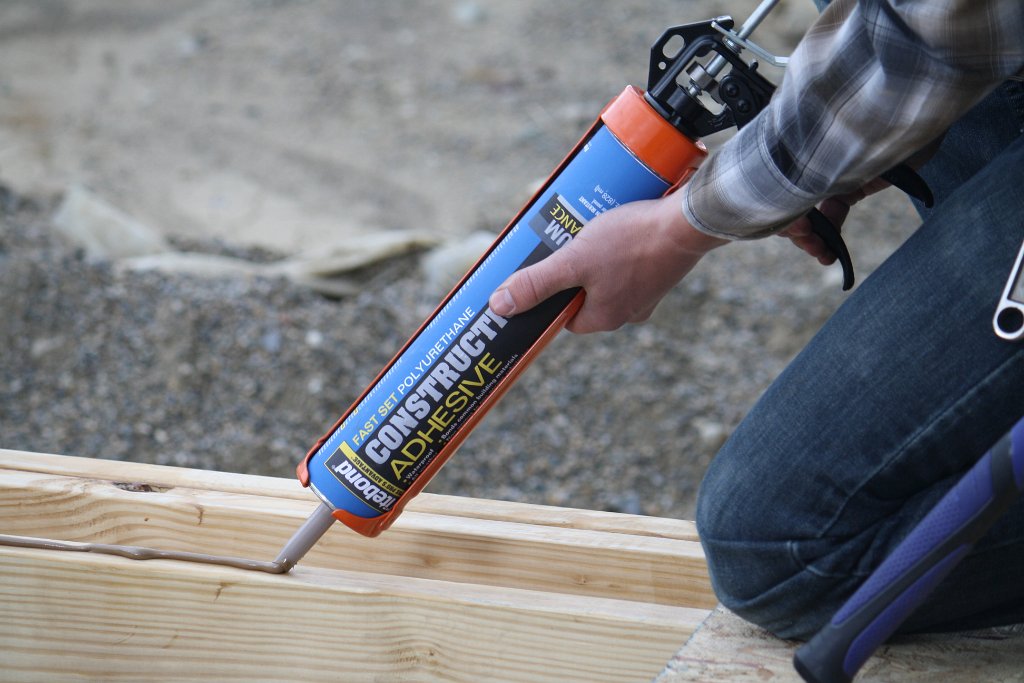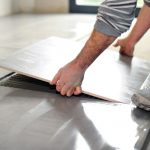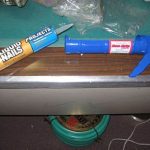Construction adhesive is a type of adhesive used in the construction industry for bonding surfaces together.
It is an essential element in construction projects, providing strong and lasting bonds between materials.
However, it is important to understand the factors that affect its set time, as this will determine how effective it is at its job.
What is Construction Adhesive?
Contents
Construction adhesives are made from synthetic resins and are designed to provide a strong bond between two surfaces.
They are usually applied with a gun or trowel and can be used on a variety of materials, such as wood, metal, concrete, and plastic.
The most common type of construction adhesive is polyurethane-based, which provides excellent adhesion properties and durability.
Types of Construction Adhesives
Construction adhesives have gained popularity in recent years because they are fast and easy to use.
Not only do they save time, but they also reduce labor costs and waste during the construction process. These adhesives are categorized as either liquid adhesives or powder adhesives.
Each has a specific use and an advantage depending on the application.
Liquid adhesives
Liquid adhesives are versatile, easy to apply, and waterproof; however, they are more expensive than powder adhesives.
They work by mixing with water and bonding two materials together when they’re dry. They can be used in applications such as concrete repair, wood bonding, metal bonding, and waterproofing.
Powder adhesives
Powder adhesives are cheaper than liquids and work by mixing with water, but they are difficult to apply in tight spaces and on uneven surfaces. Powder adhesives can be used in applications such as wood bonding, metal bonding, and concrete repair applications.
Factors that Affect Construction Adhesive Set Time
The set time of a construction adhesive is determined by several factors, including temperature, humidity, surface porosity, and substrate type.
The temperature affects the curing process, as higher temperatures will speed up the process while lower temperatures will slow it down.
Humidity also plays a role, as high humidity levels can cause condensation to form on surfaces, which can affect the adhesive’s ability to bond properly. Surface porosity can also affect set time, as porous surfaces require more time for the adhesive to cure than non-porous surfaces do.
Finally, substrate type plays an important role because different substrates require different types of adhesives to achieve optimal bond strength.
Temperature
Temperature plays an important role in determining how quickly a construction adhesive will set or cure.
Generally speaking, higher temperatures speed up the curing process, while lower temperatures slow it down.
This means that when working in warm climates or during the summer months, you may need to adjust your application technique accordingly to ensure proper curing times for your project’s success.
Humidity
Humidity levels also affect the setting time, as high humidity levels can cause condensation to form on surfaces, which can affect the adhesive’s ability to bond properly with them.
This means that when working in humid climates or during rainy seasons, you should take extra care when applying your adhesive to ensure proper curing times for your project’s success.
Surface Porosity
Surface porosity affects the setting time because porous surfaces require more time for the adhesive to cure than non-porous surfaces do due to their increased absorption rate of moisture from the air around them.
Therefore, it is important to select an appropriate type of adhesive for each surface you plan on bonding together so that you don’t end up with a weak bond due to improper curing times caused by incorrect product selection and application technique.
Substrate Type
Substrate type also plays an important role when selecting an appropriate construction adhesive because different substrates require different types of adhesives to achieve optimal bond strength between them and their surrounding materials, surfaces, objects, etc.
For example, wood requires a different type of adhesive than metal does, so be sure you select one specifically designed for use on your chosen material before applying it.
Bond Strength
The final factor that affects set time is bond strength, which refers not only to how long it takes for the glue/adhesive itself to set but also to how long it takes until its maximum holding power has been achieved.
This varies depending on product composition, but generally speaking; stronger bonds take longer than weaker ones do.
So, be sure you allow enough time before loading any weight onto newly bonded items.
Also Read: Everything About Liquid Nails Drying Time Temperature
Conclusion
In conclusion, construction adhesive set time is an important factor to consider when using adhesives for construction projects.
It is affected by several factors, such as the type and quality of the adhesive, temperature and humidity levels, surface preparation, and application technique.
Understanding these factors can help ensure that the adhesive sets properly and provides a strong bond between materials.
Additionally, it is important to follow the manufacturer’s instructions for the best results. With proper knowledge and practice, the setting time of construction adhesives can be effectively managed for successful projects.






